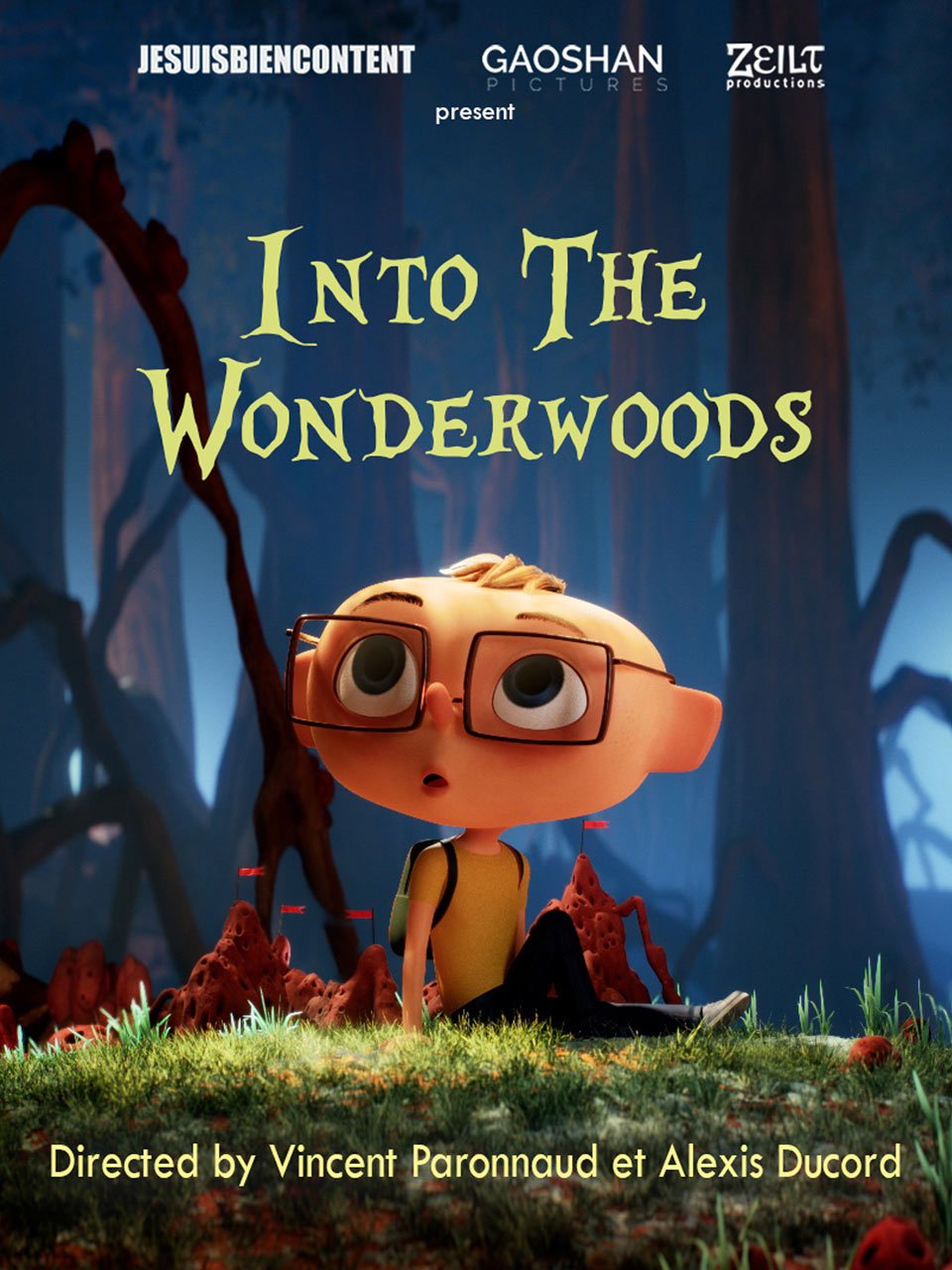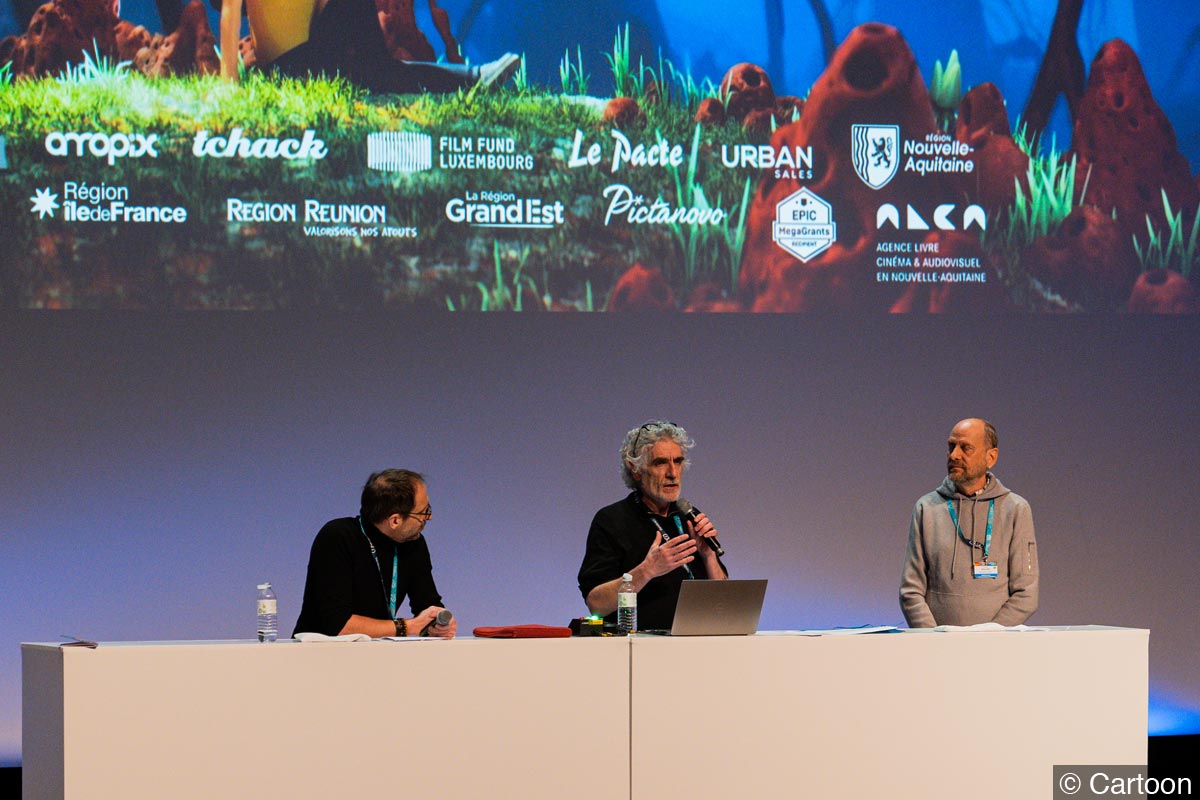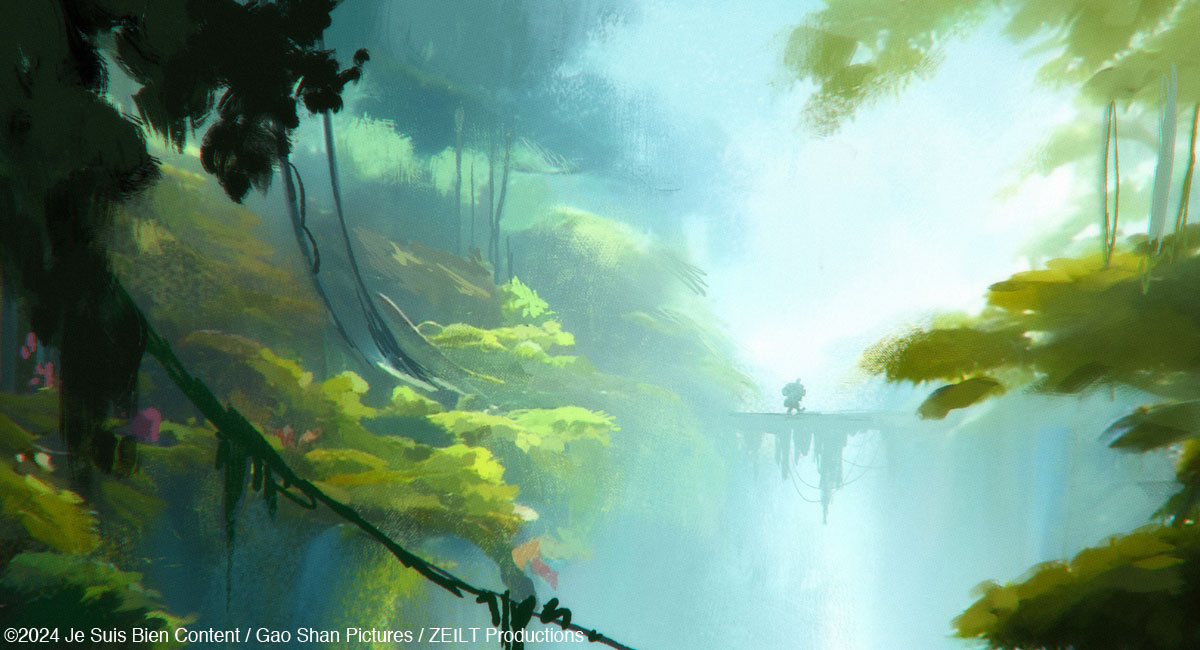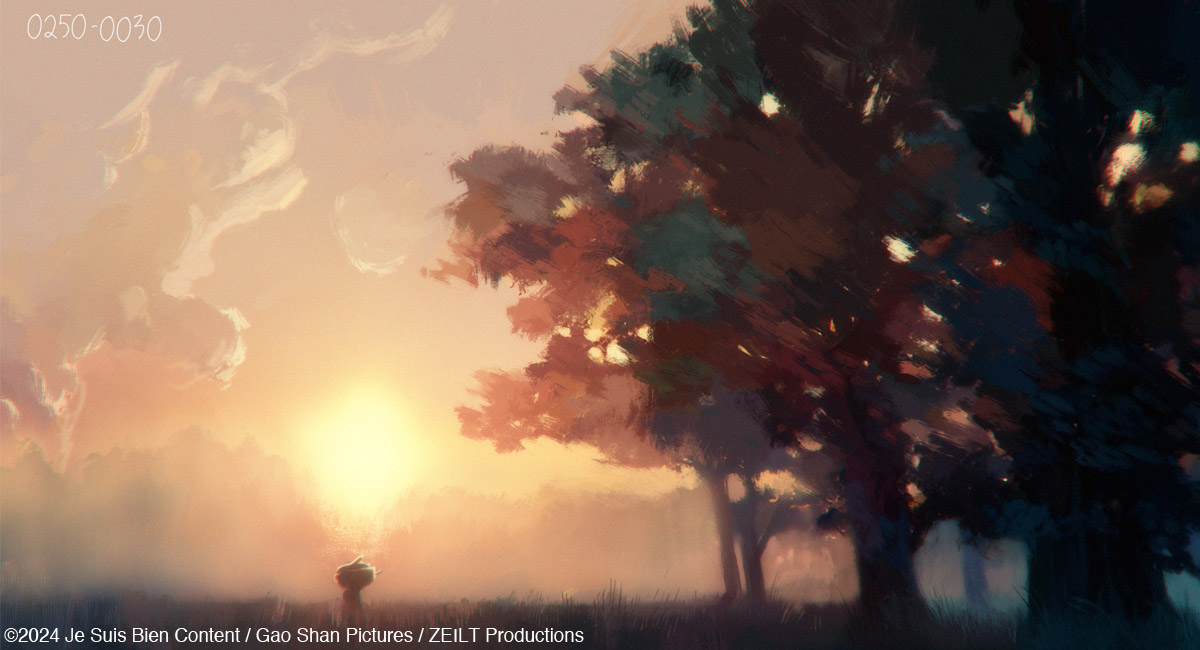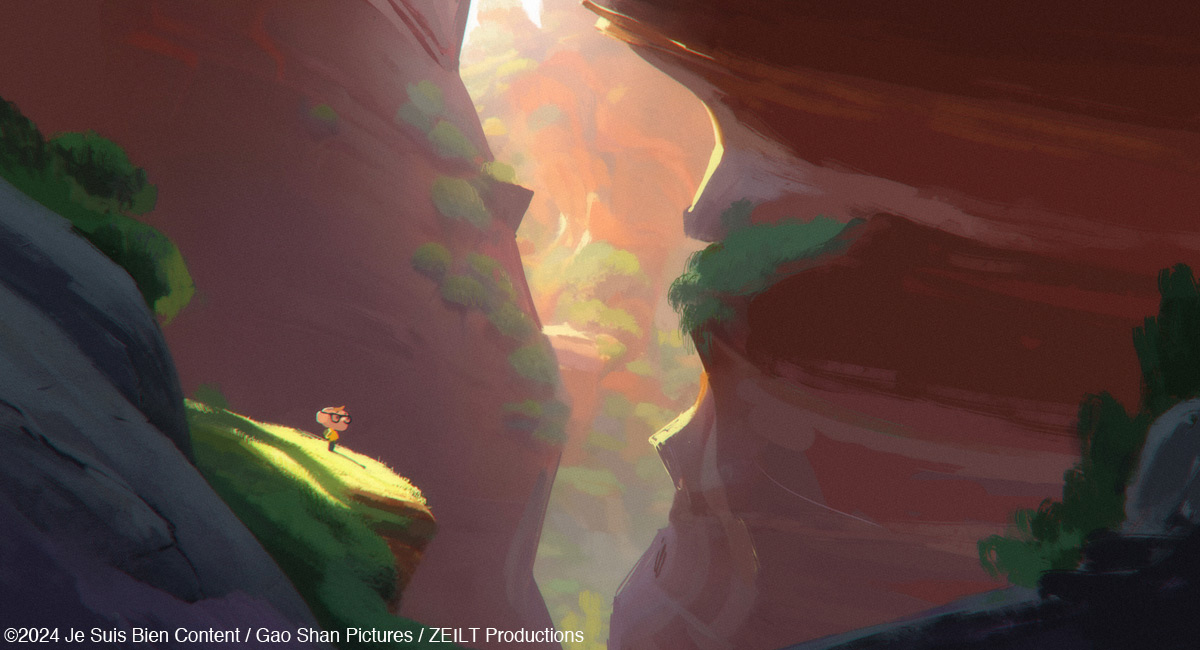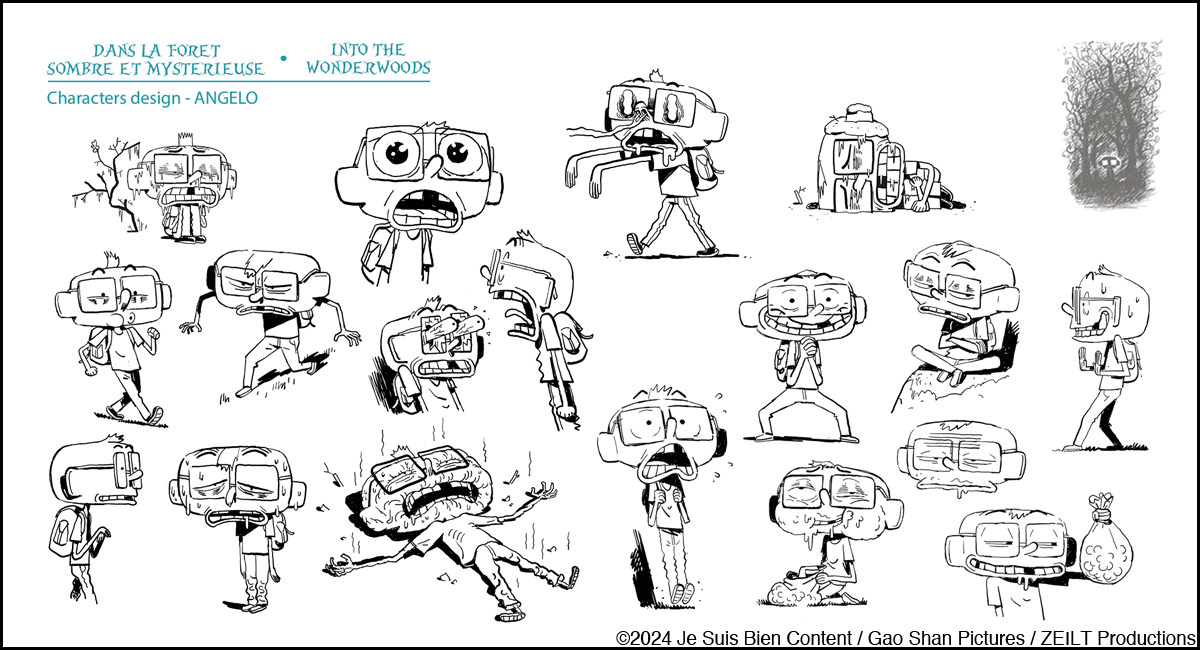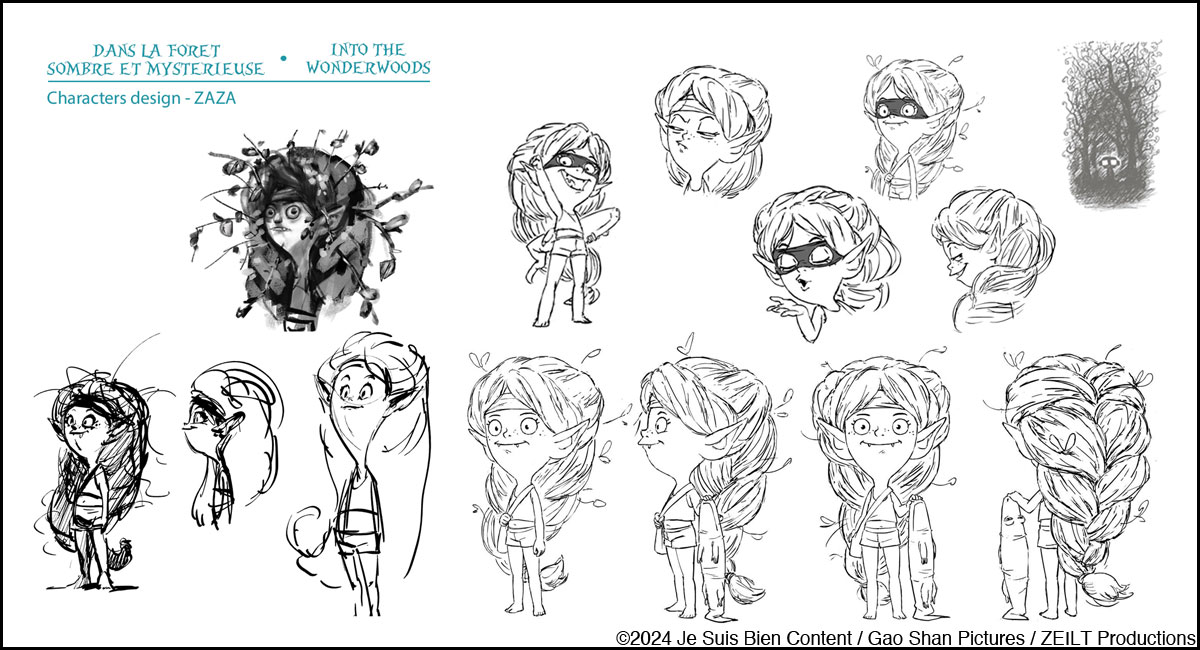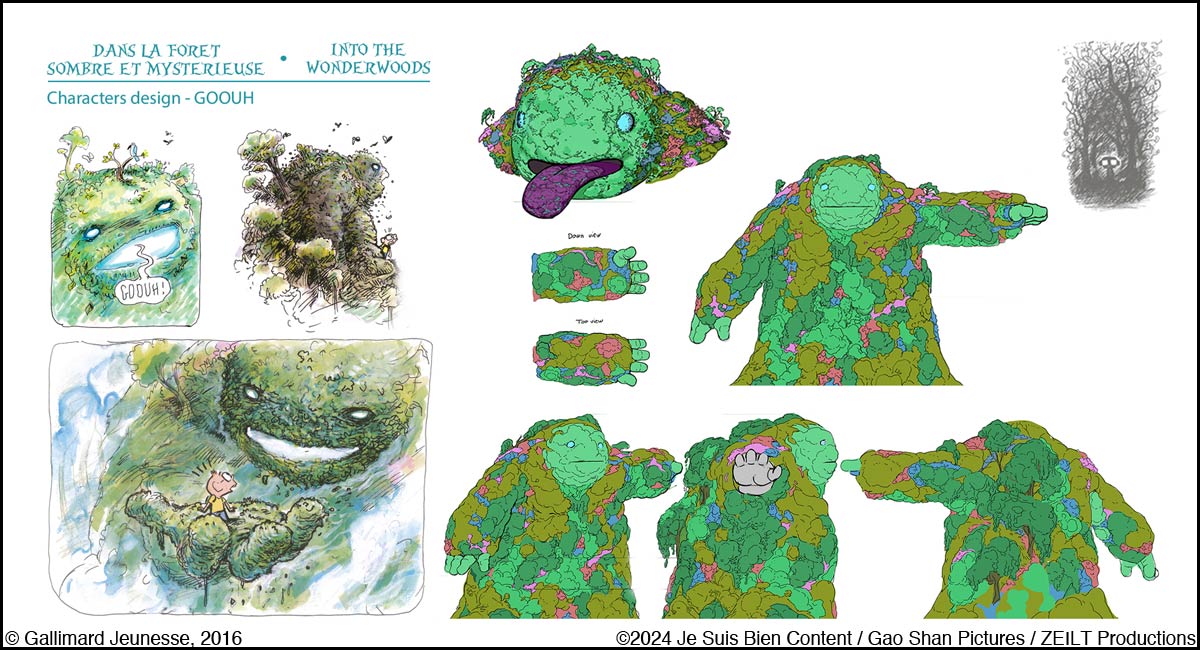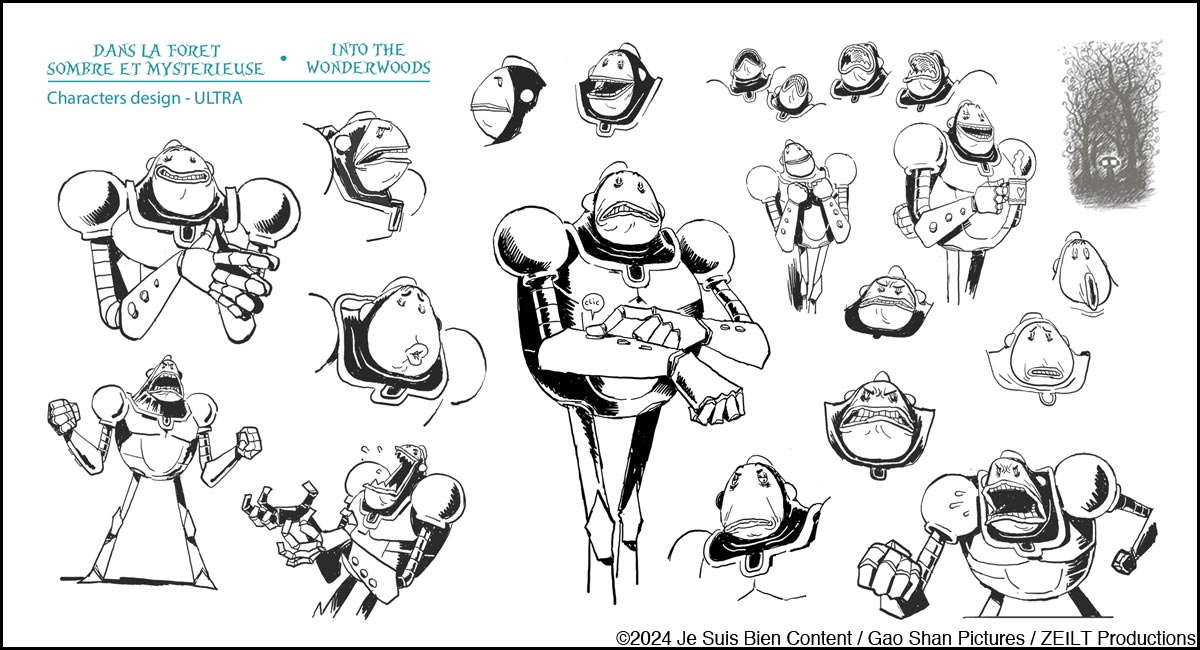(Status: In production)
Into the Wonderwoods
Directors: Vincent Paronnaud and Alexis Ducord
Scriptwriter: Vincent Paronnaud (adaptation from Into the Wonderwoods by Vincent Paronnaud)
Main Producers: Marc Jousset (Je Suis Bien Content, France), Arnauld Boulard (Gao Shan Pictures, France), and Laurent Witz (ZEILT Productions, Luxembourg)
Co-Producers: Mathieu Rolin (Amopix, France), Florent Steiner (EV.L prod, France), Guillaume Natas (EV.L prod, France), and Jean Labadie (Le Pacte, France)
Distributor: Le Pacte
International sales: Urban Sales
Target audience: Children and Families
Technique: 2D digital and 3D digital
Format: 80’
Synopsis
Angelo dreams of becoming an explorer and a zoologist. When he hits the road with his family to visit his beloved, ailing granny, his distracted parents leave him behind at a rest stop. Left to his own devices, Angelo decides to cut through the forest in search of his family. He enters a dark and mysterious world inhabited by strange creatures.
Into the Wonderwoods is Vincent Paronnaud’s highly-anticipated animated feature film project based on his comic of the same title. Vincent is a well-respected bande dessinée artist and also a leading figure in the global animation industry, known for the multiple award-winning Persepolis (2007) that he co-directed with Marjane Satrapi. This time, Vincent is co-directing with Alexis Ducord who is famous for Zombillénium (2017).
Into the Wonderwoods leads you to an adventure in a mysterious magical forest along with a boy named Angelo. It is family entertainment with several layers, such as a theme of ecology sprinkled with humour and irony, that appeal to not only children but also to young adult/adult audiences.
We had the opportunity to interview Vincent. Here are his insightful words on the story behind the film project.
Interview with Vincent Paronnaud
Hideki Nagaishi (HN): What do you think are the key points of this animated feature film that would attract the potential audience?
Vincent Paronnaud: This ecological fable, with its mix of action and reflection, was an excellent starting point for making an epic, funny and sensitive film.
The film is aimed primarily at children, but it can be read at different levels and appeal to a wider audience.
Young audiences will find themselves drawn into Angelo and Zaza’s story, thanks to the film’s adventure dimension and fast-paced pace. The film will also appeal to teenagers and adults with its many references to genre films.
HN: Do you have any specific messages or experiences you want to deliver to the target audience through the film?
Vincent Paronnaud: This entertaining film tackles important issues such as ecology and the right to be different, without being moralistic, but rather tackling them through humour.
HN: How did this feature film project start?
Vincent Paronnaud: When I started the comic strip, I immediately had in mind the film adaptation of this story.
My producer Marc Jousset was the executive producer of Persepolis. With his company Je Suis Bien Content we made four short films. When my comic book came out, we decided to adapt it into a feature film, mainly using 3D technology. We asked Alexis Ducord, who had co-directed Zombillénium, to co-direct the film.
HN: For the original comic, where did the initial idea of the story and characters come from?
Vincent Paronnaud: I used to tell my kids stories from children’s literature, and I decided to do my own version. It’s an initiation tale for children, which is a change from the adult comics I usually do. On a more personal note, I’m referring to my granny, whom I adored and who died when I was Angelo’s age.
I guess I’m trying, through this story, to correct fate. That’s what art is for…
HN: Are there any differences between the characters, story, and setting of the original comic and this animated feature film? If so, what elements are unique to the film, or how and what are you adapting or changing from the original comic?
Vincent Paronnaud: The fundamental difference from the book will be the narrative. I don’t envisage a division into chapters. I have in mind an ascending structure. To achieve this, I need a villain on par with Angelo’s innocence. I created the character Ultra who, at the head of his mechanical army, devastates the forest. This diabolical character keeps Angelo’s journey consistent. Zaza, a rebel, was invented for the film. She embodies the spirit of freedom and fighting spirit.
HN: What are you taking care in the most whilst scriptwriting for the film, and why?
Vincent Paronnaud: Angelo’s quest to find his grandmother is a journey of initiation, nourished by these unlikely encounters.
Angelo will be the central pivot of this story, yet there are no secondary characters in this project. Each character will be treated with precision, because each of them conveys a message.
Angelo will change the others as much as the others will change him. The perfect alchemy for moving forward in life.
HN: In terms of the visual design and visual direction of the film, could you please let us know your vision and your goals? And what do you take care in the most when designing and creating the visuals of the film?
Vincent Paronnaud: The film’s originality also lies in the multiple inserts of 2D sequences with different designs. These 2D sequences take us back to animated films from the 1930s to the 2000s. Each style has a precise justification, such as the design of the series of Japanese films from 1990, which are Angelo’s mental projections of himself dreaming of becoming a superhero.
With Luciano Lepinay, the film’s artistic director, we wanted to be close to the comic strip in terms of its state of mind, but at the same time give the film all the graphic latitude it needed to match its visual ambition.
HN: What are the attractive things for you in adapting the story of your comic into animation? And what are the big and important differences between comics and animation as visual storytelling media for you?
Vincent Paronnaud: What attracted me to the adaptation was that it gave a new dimension to the story by creating new characters like Ultra and Zaza. The meeting between Zaza and Angelo takes a personal approach to the sentimental relationships between pre-adolescents.
The differences are also visual and technical. Moving from a comic book narrative to animation, especially in 3D, gives the story more depth and spectacular scenes, and so has a greater impact on the audience.
HN: If there are any stories behind the film’s music that you can share with us now, could you please let us know?
Vincent Paronnaud: Olivier Bernet, the composer of the music, and I have a long relationship. We formed rock bands in the 1990s. Olivier has done the music for all my films. He has a very wide range, Olivier is very talented, he can go from rock, jazz to orchestral music.



